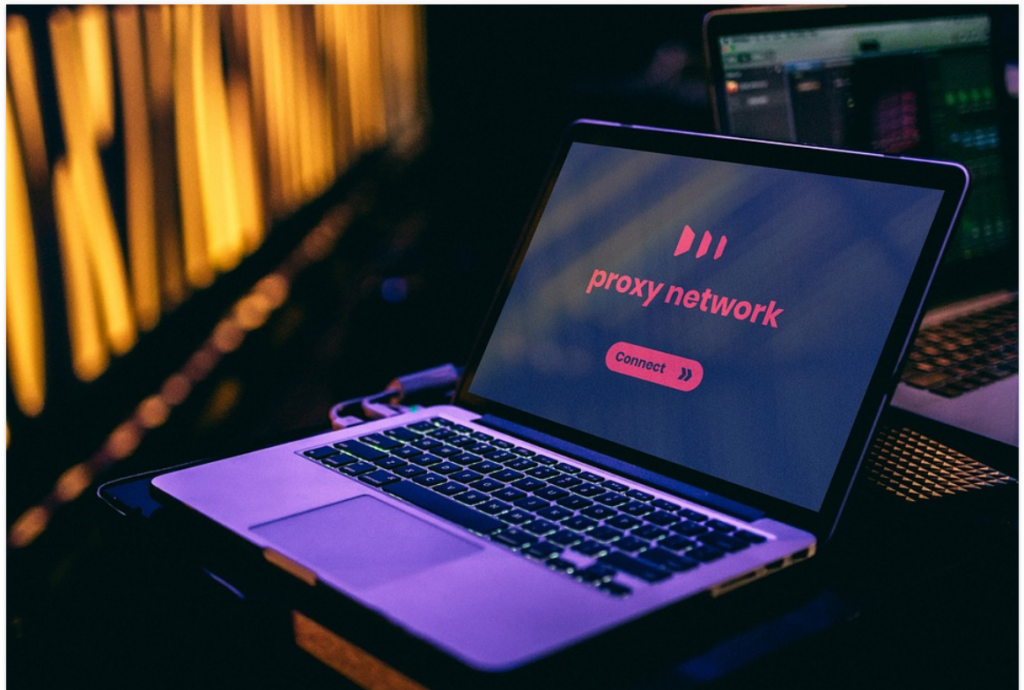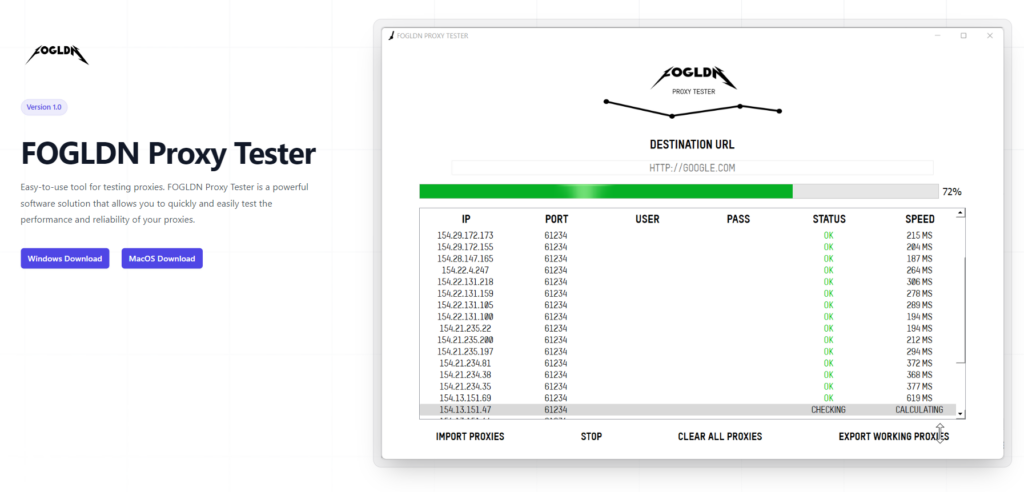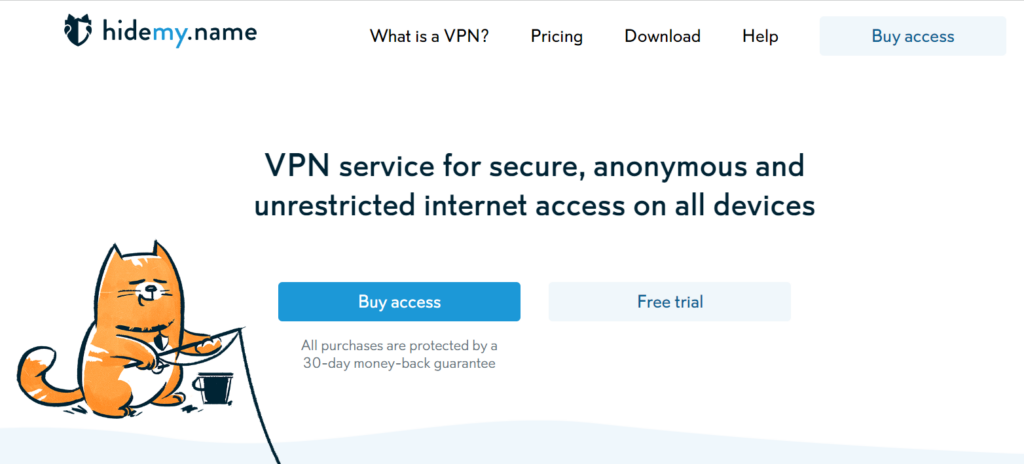Proxy servers are an integral part of the web’s infrastructure, assisting with tasks as varied as site scraping, marketing, cybersecurity, and automation.
The effectiveness of the proxy, however, might have far-reaching consequences: If your proxy servers are unreliable, you might lose access to critical information. To solve this issue, we may conduct quality assurance tests on proxies.
In this tutorial, we’ll look at several effective methods for testing proxies: What resources are available? What factors should we think about? What should I look for in a proxy service?
Contents
- What do you need to test a proxy?
- Important Things to Keep in Mind While Conducting Proxies Tests
- Additional tips on how to test your proxies:
- FAQs About How to Test Proxies
- When should you use a proxy checker?
- How to verify whether your proxy is active and functioning?
- For what reason should I examine the proxy's speed?
- Conclusion: How to Test Proxies?
What do you need to test a proxy?
Setting up proxies manually may be a technical and time-consuming procedure, so it’s crucial to have the necessary tools and resources available.
Tools with a command line interface, web-based services, and specialized proxy testing applications are just some of the software and online services available that can automate the process.

P.C: PIXABAY
In addition, we must have a set of standards by which to evaluate the proxy servers: Speed, dependability, anonymity, and protocol support are all possible indicators.
1. IP Checkers
The IP address of a computer or other networked device may be checked using an IP checker. There are a number of situations in which this may be helpful, such as investigating network problems or assessing network safety.
The location, kind of device, and ISP of the target device may all be learned with the use of several online IP checkers.
The majority of IP checks do essentially the same functions: When we look up our IP address using a service like IP location, we may learn a variety of information about ourselves, including our physical location (at the national, local, and ISP levels), web browser, and operating system.
However, they lack the capability to conduct sophisticated proxy testing.
2. IP Databases
IP addresses and other details, such as their location and the company that controls them, are stored in a database called an IP database.
There are several applications for such databases, including geolocation tracking and blocking content delivery to users depending on their IP address.
When it comes to intellectual property records, some are kept by governments while others are kept by private companies.
Several IP databases are available for use in testing proxies and evaluating their quality: It’s possible, for instance, that your home proxy may be mistaken for one at a data center.
Security-conscious websites sometimes rely on IP database information, which may be used to prevent access from users whose IP addresses have been flagged as proxy servers.
It is crucial to utilize a credible source when depending on this information since IP database accuracy and completeness might vary. IPinfo, IP2Location, DB-IP, and GeoIP2 are just a handful of the trustworthy resources available.
3. FOGLDN Proxy Tester
FOGLDN is a desktop application that provides free proxy testing: Pinging the intended server, it then displays the response time in milliseconds, which is how the testing is conducted.
When dealing with high-frequency operations, such as DDoS simulation (done by cybersecurity organizations) or pricing data collecting, a difference of, say, 465 and 1,322 ms might be a dealbreaker.

Different proxy authorization methods, such as ip:port and ip:port:user:password, are supported by the FOGLDN proxy tester. A text file may be created with the test results.
This program has several limitations, however. The biggest issue is that it doesn’t tell you anything if your request fails. In addition, you can’t utilize FOGLDN to verify the proxy’s characteristics like its kind, location, or other settings.
Overall, it may be difficult to scale your setup while testing proxies using the FOGLDN proxy tester due to the wide variety of possible setups and proxy service providers.
4. Hidemy.Name
Information such as proxy location, type, anonymity level, and performance may be seen on Hidemy.name since the site compiles data from both public and private IP databases.
Hidemy.name’s scalability is a big benefit: You may submit entire.csv files with big proxy lists for testing in bulk.

There are two types of Hidemy.name accounts: You may run up to 100 simultaneous proxy tests with the free plan, thanks to the 20 available threads.
The commercial version does away with these limits, allowing for as many as 64 threads and an infinite number of proxy tests. With the free plan, you may test 40 proxies every minute (each one takes 30 seconds).
5. Custom Software
If you have any programming experience and none of the pre-made solutions work for you, you can always try making your own proxy tester.
Making a scraping bot to check proxies by using its connection to retrieve test data from the target server is one approach.
Scrape You can get some experience with common data kinds (such as a list of countries) on the Site’s basic static web pages. Proxy testing at scale is made possible by APIs provided by services like Hidemy.name and IPinfo (see above for links).
Important Things to Keep in Mind While Conducting Proxies Tests
Proxy settings are often prioritized based on location, speed, and availability. They collaborate to provide a fast and secure online experience
1. Location
The proxy server’s location may have an impact on how quickly your connection is processed. It is possible that your internet connection may slow down if the proxy is situated in a faraway place since it will take longer for data to be transmitted back and forth between your device and the server.
The geographic location of a proxy server may also affect the websites or resources it makes available. If a website is prohibited in your country, you may use a proxy server to view it from another nation.
However, you may need to make sure the given is not restricted to a specific region in this case: The Young Pope, for example, is blocked in Germany on Netflix, so connecting using a German proxy won’t let you view it.
2. Speed
You’ll only be able to surf the web as quickly as your proxy server allows. It might be annoying to utilize the internet or other online services via a proxy server if it is operating slowly.
This is especially problematic for business applications (like web scraping) when instantaneous responses are essential, such as in high-frequency trading platforms.
Home users also benefit from faster connections, since there are certain websites and media that may only be accessible at higher speeds.
It may be annoying and difficult to utilize the internet efficiently if websites and files take longer to load than usual because of a sluggish proxy server. If your proxy server is too sluggish, you may not be able to access certain websites or content at all.
3. Uptime
How long a proxy server has remained up without being restarted is known as its “uptime.” Because a proxy that isn’t running constantly can cause issues and interruptions with online activities, this is an important metric for both businesses and individuals that use proxy servers to access the internet.
Uptimes of 99% are typical, with top proxy providers like Infatica often reaching 99.9%. Selecting a dependable hosting provider and keeping the proxy server well-maintained is crucial for ensuring its high availability.
Additional tips on how to test your proxies:
Keep these things in mind when you buy any kind of tool:
1. Make sure your machine is protected.
To protect your computer from hackers, make sure you have the newest anti-virus software installed. It’s possible for security flaws to exist on your system even if anti-virus software has been installed.
After all, modern hackers are very skilled and always one step ahead of you. You might use paid proxies as an alternative to anti-virus software to protect your computer.
2. Never reveal private details.
There is a risk that personal information, such as your IP address and location, may be exposed if you use a free proxy. Therefore, you should always use paid proxies other than for light browsing activity to hide your IP address.
FAQs About How to Test Proxies
When should you use a proxy checker?
They are often used by those investigating or already using proxy servers to ensure the servers’ functionality and performance. The anonymity of the proxies may be tested using the tool to verify whether it is successfully hiding the user’s IP address and providing enough online privacy.
How to verify whether your proxy is active and functioning?
Your proxy’s location, availability, and speed can all be verified. You may get assistance with it on a number of different websites. For example, you can check your proxy speed from here. These resources are made accessible to the public at no cost.
For what reason should I examine the proxy's speed?
Using a faster proxy may enhance your online experience by decreasing wait times and enhancing the functionality of apps that depend on a constant data connection. In addition, testing the proxy’s speed can tell you whether it’s giving you the kind of performance you need for your use case.
Quick Links:
- 5 reasons to use Proxies for business: Why are proxies important?
- 8 Best Cheap Proxy Providers
- 10 Best India Proxy Providers
- 10 Best China Proxy Providers
Conclusion: How to Test Proxies?
You may use whatever proxy testing tool you choose, but you should only utilize proxies that have been obtained in a lawful manner.
Infatica is a trustworthy proxy service since it obtains express permission from all connected devices before leasing their IP addresses. The result is improved proxy quality and a more robust network.

